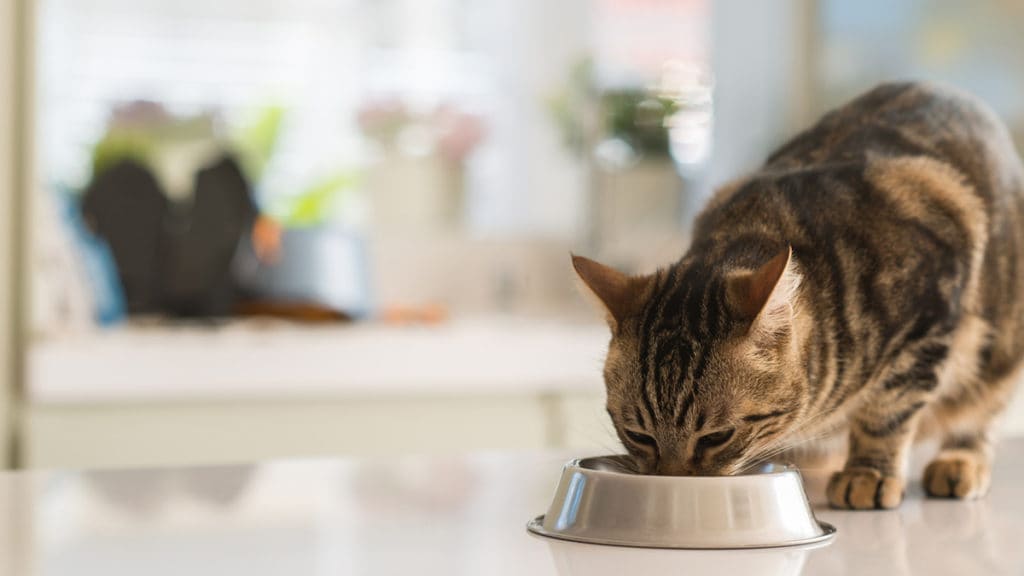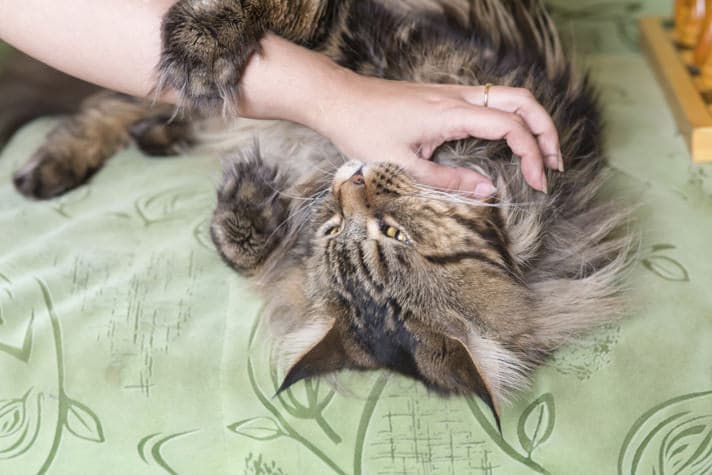If your cat eats too fast, it’s a habit you should try to break.
When your cat eats too fast, she is more likely to vomit up her meal soon after eating. But that’s not the only drawback to your feline’s fast-eating habits. It can also lead to obesity, which can put her health at risk, says Bruce G. Kornreich, associate director of Cornell Feline Health Center at Cornell University College of Veterinary Medicine, in Ithaca, New York. Obese cats increase their chances of developing a variety of serious conditions, including arthritis and diabetes, he explains.
If your cat vomits after gobbling her cat food, avoid feeding her right away (even if you feel sorry for her), recommends Kornreich. In fact, you might want to wait 12 hours before the next meal to give her GI tract a rest, he adds.
Reasons Why a Cat Eats Too Fast
While your kitty may be starving enough to bolt down her food, many cats eat quickly for behavioral reasons—they may be bored or lonely (or both) or worried that their fellow feline (or canine) housemate is about to steal their food. Or your fur ball may just love to eat and wants to chow down on that pile of kibble or smelly wet food and ingest it as quickly as possible.
It’s always a good idea to take your furry family member to the vet for a checkup if her behavior has changed or something about her eating seems off. Sometimes an underlying condition, such as hyperthyroidism and diabetes mellitus, can cause your cat to have a ravenous appetite, explains Kornreich. Another symptom of both diseases is vomiting. So if your pet pukes quite regularly, you’ll want to get that condition checked out too to rule out any potential problems.
4 Solutions For When Your Cat Eats Too Fast
If your vet gives your cat the all-clear, it’s time to change things up at mealtimes so your cat can savor each bite—for your cat’s sake and for the sake of your floors and carpet. Here are four tricks to try:
1. Make your kitty work for her meals.
Regular food bowls don’t require your cat to forage for her food. Enter a slow-feeding bowl. Northmate’s Catch interactive feeder has soft rubber spikes that trap the kibble pieces, so your cat has no choice but to push and grab them with her paws if she wants to eat. That will slow her down!
2. Create your own slow feeder.
If you don’t want to splurge on a new food bowl—your finicky feline may not take to it after all—you can create your own slow feeder, says Kornreich: Put something inert like a rock or a brick inside your pet’s regular bowl so your cat has to work around the obstacle to get to her food. (This works with wet as well as dry food—just make sure the rock or brick is clean!)
3. Let your cat play with her food.
Interactive toys that dispense kibble can keep a cat entertained—and work on the same principle as a slow feeder. Not only will these toys slow down her tendency to chow, but they’ll give your cat a physical and mental workout, says Kornreich. Talk about win-win-win. A good one to try: PetSafe’s Interactive Feeder. It’s shaped like a ball and you can adjust the level of difficulty so your smart kitty is kept challenged as she swats it around the room, getting her exercise and some mental stimulation.
4. Spread out the meal.
You can spread wet food or kibble over a tray so your pet has to slow down as she moves from bite to bite. Or try dividing meals among sections of a muffin tin (regular sized or mini) or an ice cube tray. Another trick: Put tiny amounts of food in a few bowls and place them in different areas of your home—one in the kitchen, one in the upstairs hall, another in the family room. Again, this will give your cat some exercise and slow down her eating.
Try all of these solutions to see which one sticks (or to keep things interesting at mealtimes). Your reward will be a slimmed-down, healthier pet who’s less likely to get bored and overeat.
By: Linda Rogers
Share:











